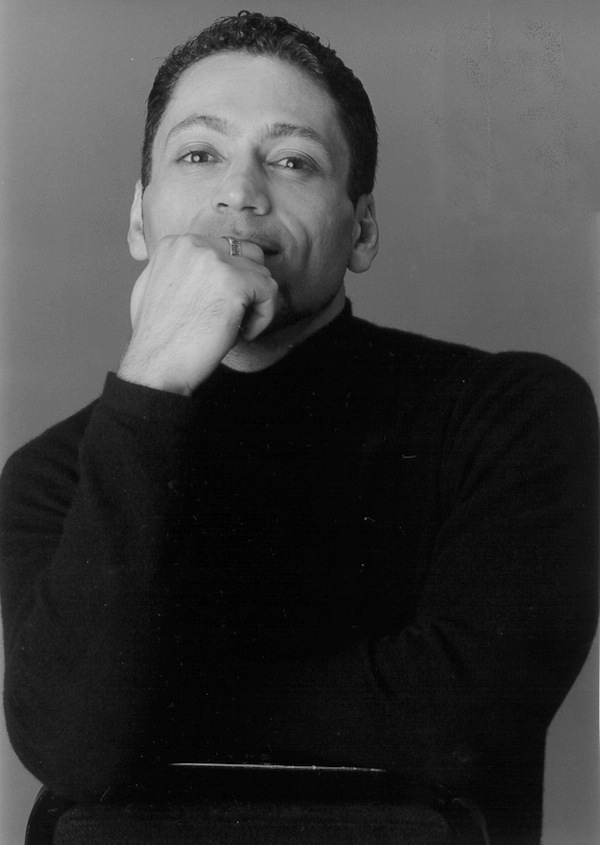
José María Condemi: María de Buenos Aires means opera and tango crossroads and much more…
By Sebastian Spreng, Visual Artist and Classical Music Writer
For the Argentine director José María Condemi, the equation María de Buenos Aires + Tango + Florida Grand Opera + Miami results in a tempting mercurial crossroads that widens and multiplies according to Astor Piazzolla’s magical music and his poet Horacio Ferrer. In his debut with the FGO, Condemi will be guided by his “Porteño” [as people from Buenos Aires are referred to] instincts, as he was last year in Cincinnati, where María delighted both audiences and critics.
“It’s amazing to see the success María de Buenos Aires has been enjoying lately in the United States,” exults the young director, who lives in San Francisco. “Long Beach, Lexington, New York and Cincinnati have already embraced it. Now it’s Miami’s turn, and Piazzolla’s success makes me very happy, because I’ve always been a fan of his music.” How to approach and define this 1968 atypical opera – actually “operita” or “little opera,” according to the composer’s description – which more than an opera is a stage cantata with tangos, an altogether different breed?
“It’s a challenge from every angle. First, and in the best tradition of the Knight Foundation’s ‘unexpected opera in unexpected places,’ it will be staged inside a bar rather than on a conventional stage. The audience will be very close to and directly involved in the action, sharing the torrent of emotions, the endless stream of surreal metaphors that emanate from Horacio Ferrer’s poetry, enriched by Piazzola’s music”
“It’s a crossroads for both traditional opera audiences and tango audiences, because though it’s a hybrid, it possesses a definite personality. It’s also a challenge for singers. The typical tango singer cannot do justice to an essentially classical score, and an opera singer cannot approach it with unnecessary preciosity. That’s why balancing the visceral and the sophisticated is the greatest challenge posed by this ‘great little opera.’ Catalina Cuervo sang María in my Cincinnati production, and she’s skilled at going to a place where she can play with both genres.”
“The plot is somewhat intricate, but what matters – and what interests me – is the work’s ritual aspect, which is its essence. Like a Greek tragedy, it is universal and timeless; it could take place in any time period,” he notes with enthusiasm, “and that ritual is what also predominates in Tango, the first part of the program, a festive exploration of the world of radio composed by Robert Rodríguez. It’s the ideal complement to María. They are two rituals that evoke the urban world, the Buenos Aires world, in the form of a circus-like, intemperate – you could even say…Fellinesque – celebration.”
Condemi shares the view that in his originality and eclecticism, Piazzola could well be “the Argentine Gershwin.” After all both of them, with greater or lesser luck, turned to Nadia Boulanger for help. In Paris, the legendary teacher performed a miracle, forced him to find himself, accept his roots and become, not “another Ravel or Bartok,” but the one and only Piazzola, the catalyst of modern Buenos Aires music, of the new tango, as dizzying as the city itself.
According to the composer, “[Tango] has sad, dramatic, sometimes sensual, religious roots. It has a little bit of everything… Religious because the bandoneón [Argentine accordion] was created in Germany to accompany liturgy. The tango is sad, it’s dramatic, but not pessimistic.” And in that vein, María comes across as a sort of Anna, the ambiguous character in Kurt Weill’s Seven Deadly Sins, with the same caustic Berlinesque irreverence translated to the Buenos Aires incarnation of a woman, “whom God created one night, when he was drunk.”
Condemi adds: “In many ways, to play María is like to play Mozart’s Don Giovanni. It’s a good analogy, both embody extremes: saintly and slutty, generous and selfish, multifaceted. They are unique, unclassifiable prototypes.”
In the end, the essential María de Buenos Aires is neither born nor dies; she is as Jorge Luis Borges defined his city in the poem “Mythical Founding of Buenos Aires”
“Hard to believe Buenos Aires had any beginning
I feel it to be as eternal as air and water.” And Piazzolla, who conveyed better than anyone that distinctive “blues” of Buenos Aires natives, was also peerless in capturing the sense of being uprooted. That uprooted ness was also part of his life as a globetrotter. It is the same uprooted ness of an artist like Condemi, who looks on Buenos Aires from here; an uprooted ness that many residents can relate to in this crossroads called Miami for whom María will mark a meeting with their roots and their destiny.
FGO double bill: Tango & María de Buenos Aires, March 21 -24 at The Stage, 170 N.E. 38 St, Miami; 800-741-1010; $25
Jose Maria Condemi
Recent Content
-
Artsarticle ·
-
Artsarticle ·
-
Artsarticle ·

